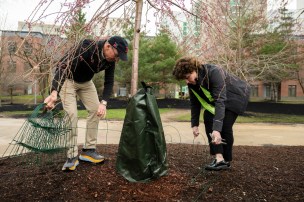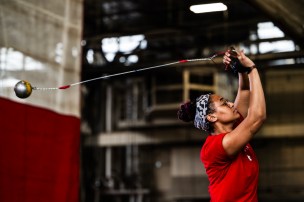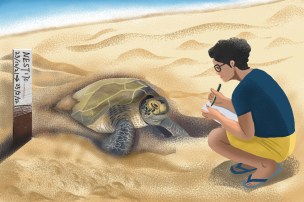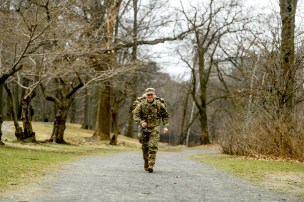Published on
Golden anniversary: Northeastern’s champion rowers return to England 50 years after their triumph
The Huskies’ men’s heavyweight eight crew reunited at Henley-on-Thames to celebrate the golden anniversary of one of Northeastern’s greatest teams—and take another row along the famed course.
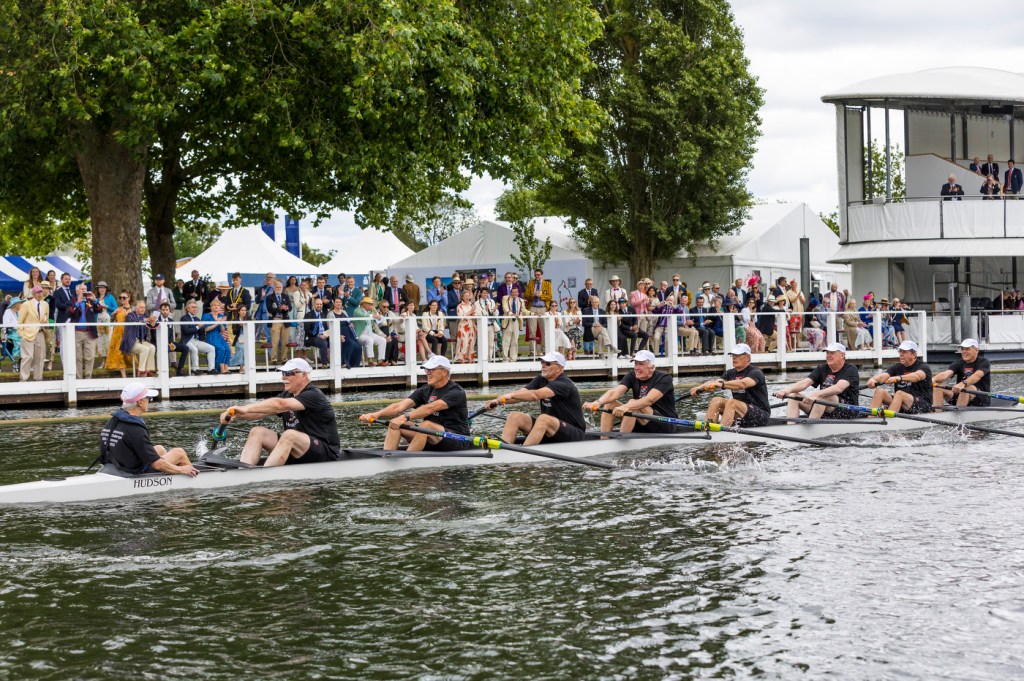
Fifty years later and they were back in the dusky tent.
The tent was on the far side of the Atlantic. It placed them once again in Henley-on-Thames, England, the birthplace of their legendary rowing coach, Ernie Arlett.
Fifty years ago he had returned home—to Henley—with a Northeastern rowing team he had built from scratch.
It was 1973 and the Northeastern men’s heavyweight eight had established itself at Henley as the No. 1 crew in the United States.
It was as though they had rowed back in time to the Old World in order to fulfill their New World dreams.
And now, a half-century later, they were reuniting at Henley, minus but two of their team. Arlett had passed away in 1997, though he was never far from their thoughts. And teammate John Maslowski—who had famously (albeit briefly) stolen the bobby hat off an English police officer’s head at Henley that year—was unable to make the voyage and so his No. 6 seat in the boat was taken up by Jim DiSanto, who had been a spare, a backup, on that historic 1973 Northeastern team.
The plan was to return to the scene of their prime and row Henley together one last time. As Chris Meehan, a recently inducted Northeastern Athletics Hall-of-Famer, reminisced with his teammates within the shade of the boat tent on the first day of July, preparing for what they had planned to be their final performance, he was struck by the accidental wonders of human chemistry—of how this handful of young men had been brought together almost randomly as students at Northeastern and then mentored as champions by their expatriate coach Arlett.
It had been a pleasing trade. Arlett had been rewarded with a proper homecoming to Henley. And over the 50 years thereafter his rowers had renewed and celebrated bonds grounded in what they had achieved together and all it said about the men they had become.
This return to Henley was meant to be the end of their athletic journey. One last run to make. Altogether they lifted the long sleek boat upon broad shoulders and marched out from the tent into the sunlight.
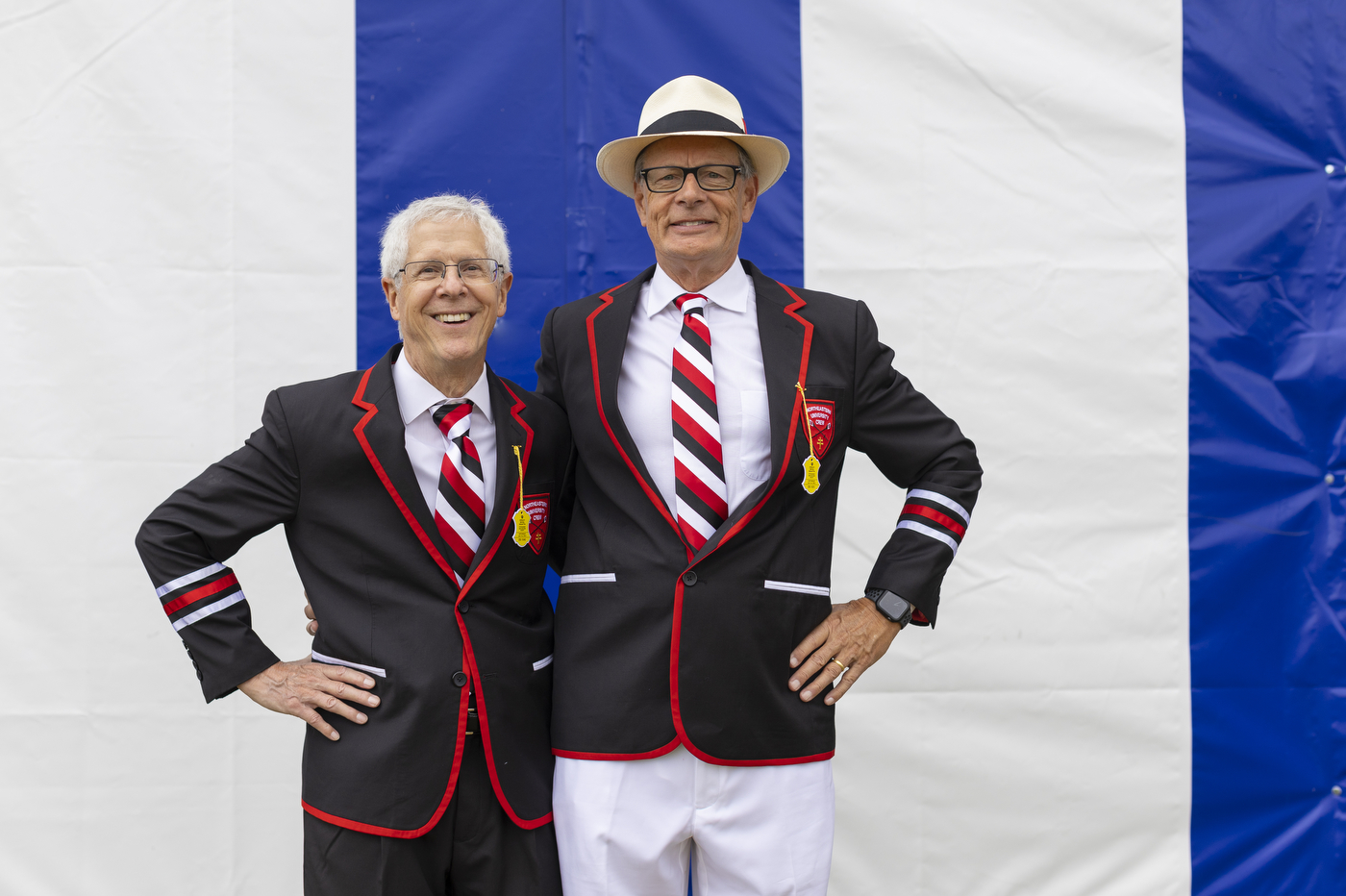
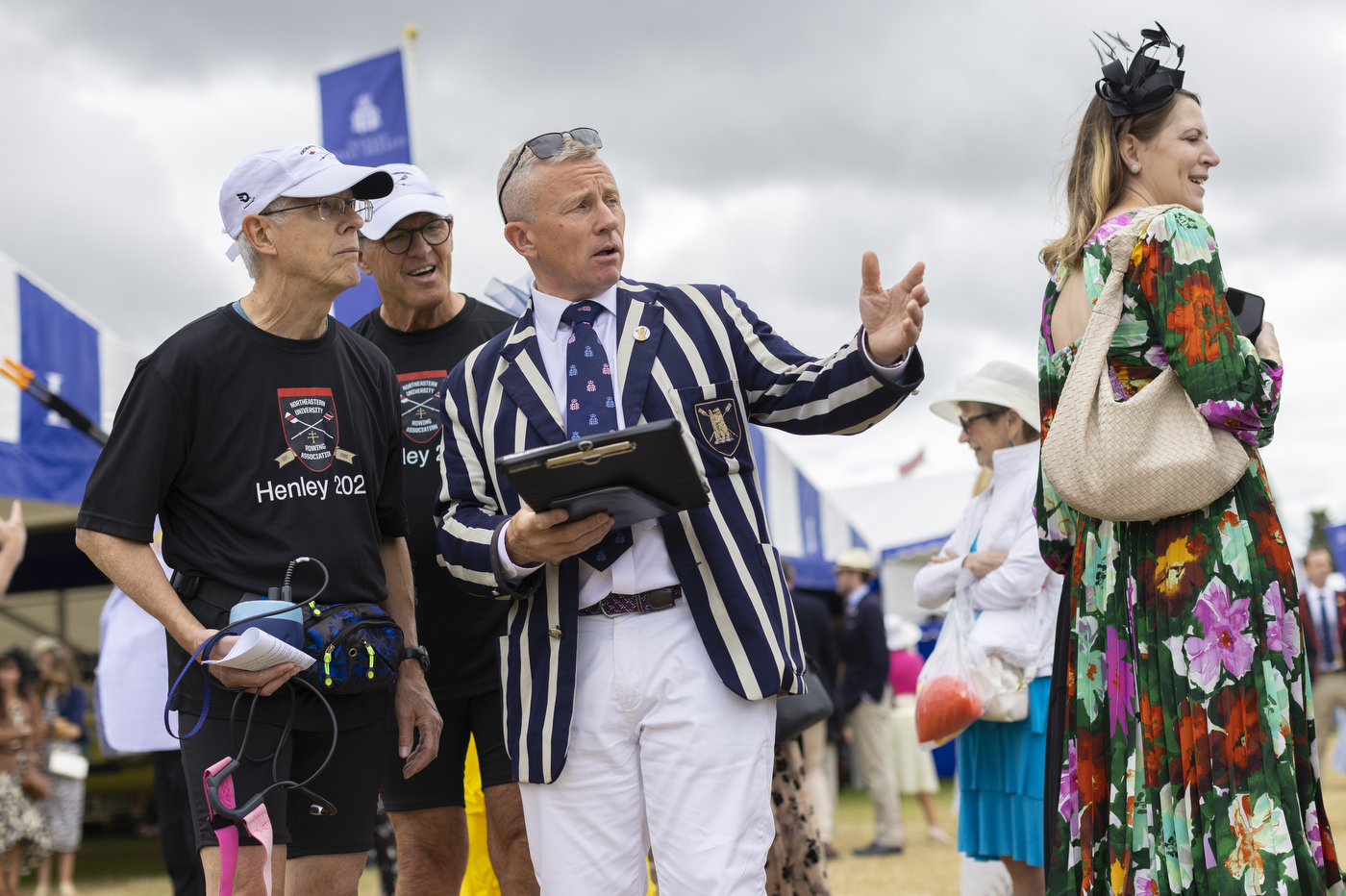
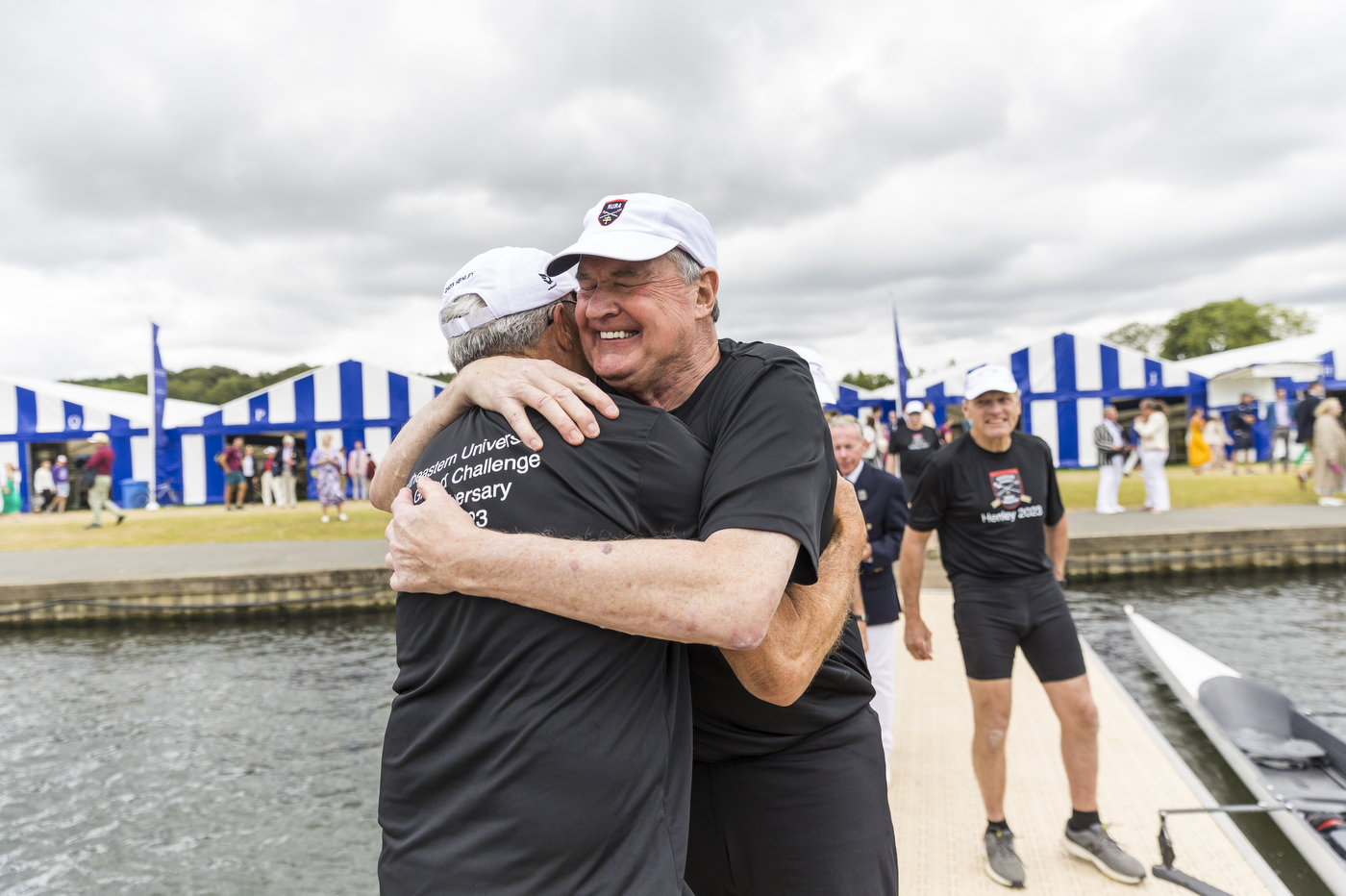
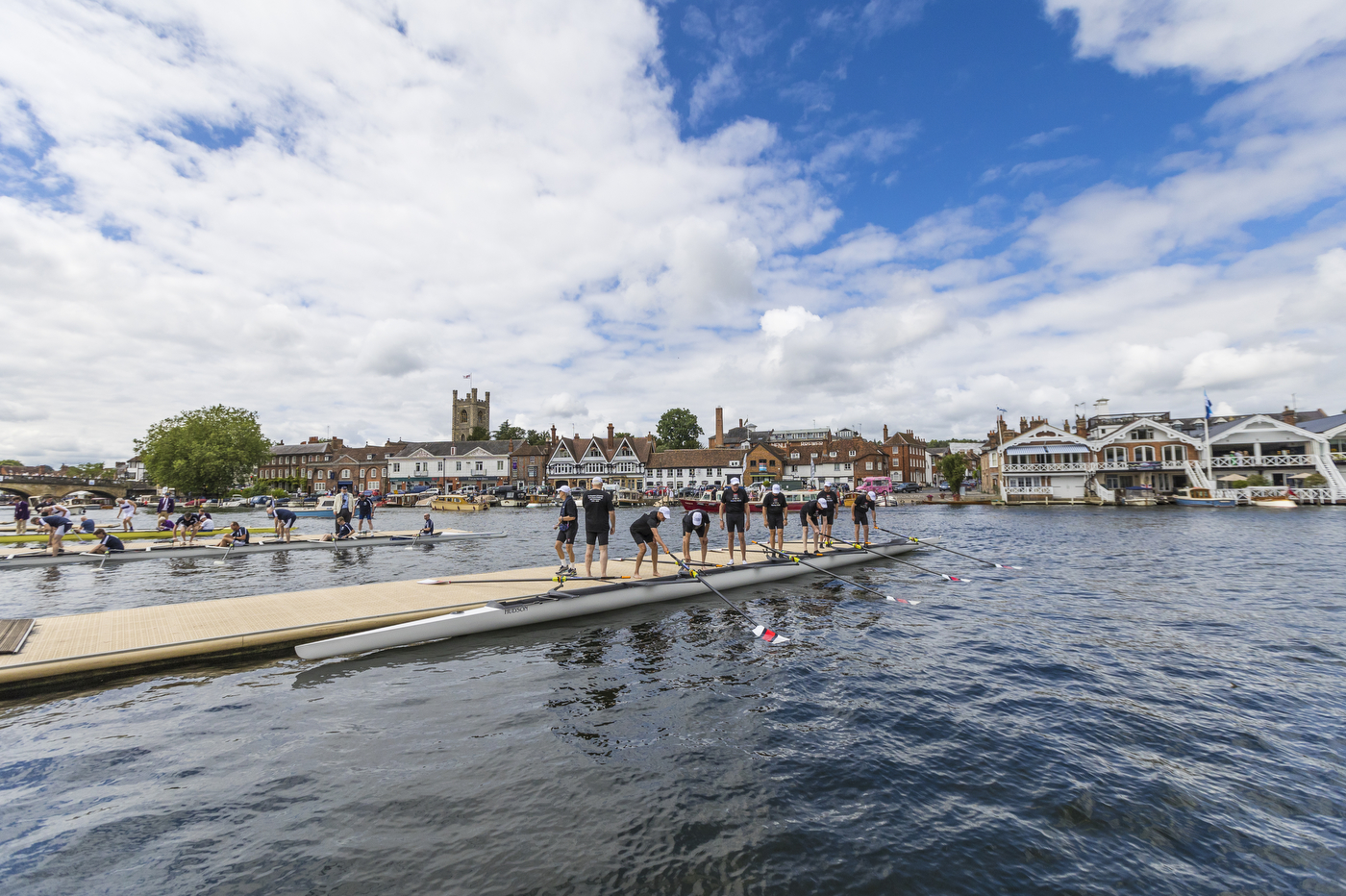
Walk on and row
Most of the crew were smaller than the rowers are today. But wasn’t everything different? In the 1970s there was little to no recruiting of high school rowing talent at Northeastern.
In those days an annual form letter was stamped and mass-mailed by the coaches to incoming freshmen inviting them to try out for the men’s rowing team (the women’s program at Northeastern wouldn’t be launched until 1976). It was in response to that query that Chris Meehan’s life changed for the better.
“I’d had no inclinations on rowing,” says Meehan, who today serves as president of the Northeastern University Rowing Association. “The key elements were the team nature of it and the work that it took to be good at it, the physical nature of it. Those kinds of things I found challenging and interesting, because it’s very much a thinking sport.”
Meehan had been a football, basketball and baseball player in high school with the assumption that his competitive days would end as a student majoring in management at Northeastern. But this new sport spun him in a new direction, inspiring him to join with his teammates and coaches in searching the campus for long, lean would-be rowers who would be invited to try out regardless of whether they’d ever sat in a boat.
“I was commuting to Northeastern,” says Frank Leahy, who was just becoming familiar with the Boston campus as a freshman in September 1970, “and I was walking through the gym. There was a scull setup there. And an oarsman named Kent MacKinnon, who passed away four years ago, said to me, ‘You look kind of small. Did you ever think about rowing?’”
Leahy was invited because he was 5 feet, 7 inches—a good height back then for a coxswain, who sat in the back of the boat without an oar, devising strategies and yelling them out to the rowers facing him.
“I had no idea what he was talking about,” Leahy says of that chance meeting with MacKinnon. “It was a case of being there at the right time; if I go another day maybe I don’t see anyone. But my whole life was changed that day.”
There would be times when Leahy would be asked to lose as much as 10 pounds to improve the speed of the boat.
“My dad was not too happy about that,” says Leahy, who would make weight by training beneath a heavy sweatsuit. “We were all committed and that was just part of what I had to do. I don’t regret a second of it.”
Peter Karassik had come to Northeastern on a scholarship in 1969 to play basketball. Then, says Meehan, rowing teammates Jim Dietz and Rich Wennersten saw the 6 foot, 5 inches freshman and invited him to the boathouse.
“They got him in a boat and that was the end of his basketball scholarship,” Leahy says.
Their captain, Bill Backman, was several years older than his teammates, having served in the Vietnam War before arriving at Northeastern.
The marriages of mind and body, of individual and team, were conducted by Arlett, a mysterious figure with a spirited British accent who in World War II had famously rowed boatfuls of fellow soldiers out to destroyers amid the evacuation of a half-million people from Dunkirk. Arlett had grown up in a rowing family in Henley, traditionally the global capital of the sport, and a dozen years after the war he had emigrated to America.
In 1964 a petition signed by 1,666 Northeastern students resulted in the creation of the men’s rowing team. Arlett, who had been coaching at Harvard, was hired as the original coach of the Huskies.
His inaugural 1965 team beat 33 of 34 opponents and qualified for the races at Henley. In that year Arlett also helped create the Head of the Charles Regatta, an annual fall event in Boston that today draws more than 15,000 rowers from around the world. In 1976, while nearing the end of his reign at Northeastern, he served as the U.S. coach for sculling at the Olympic Games in Montreal.
In his honor, the Arlett Cup is awarded each year to the winner of the Northeastern-Boston University men’s race.
“He was quite interesting because he wasn’t a coach that was on you,” Meehan says. “In coaching sessions he would point out only a few things from time to time to correct. He would expect a lot of self-discipline to make things happen. If something wasn’t going right he would say so. He commanded a lot of respect from us as a result of his style and that he was able to do it the way he did.
“He would have a smile or chuckle with his British accent, which gave him this air of having the knowledge of the sport in such a way that you just knew he knew what he was doing.”
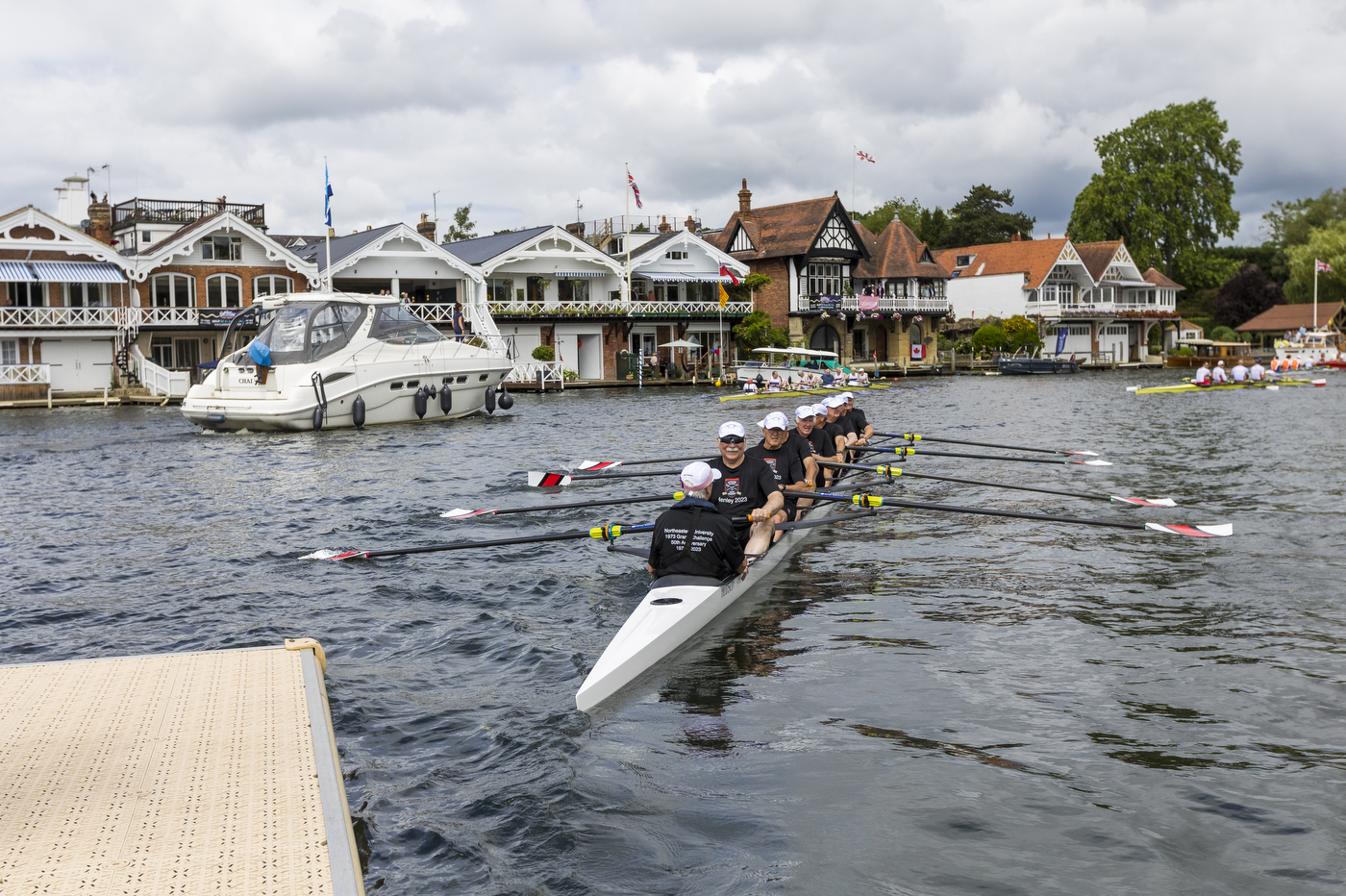
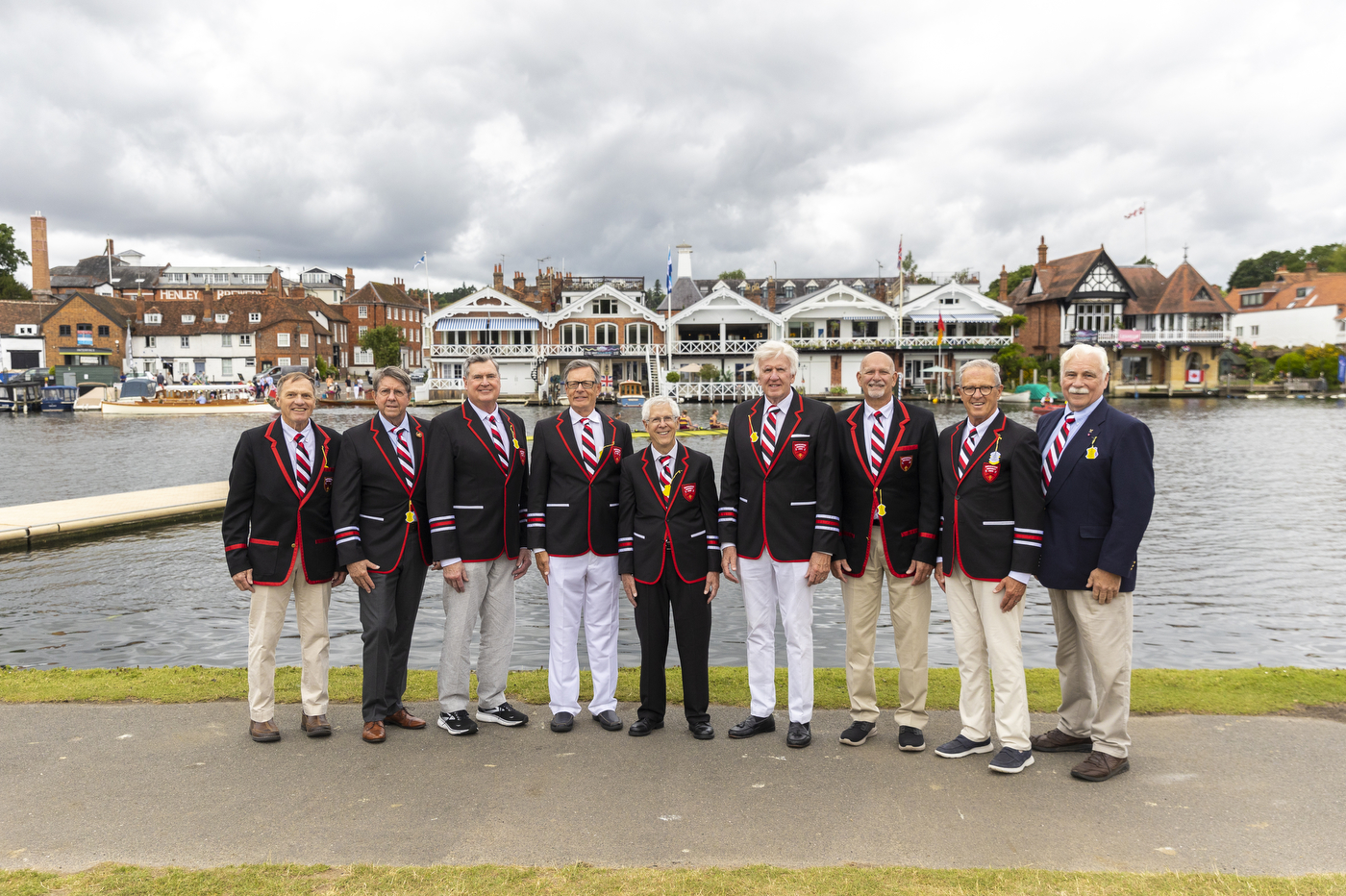
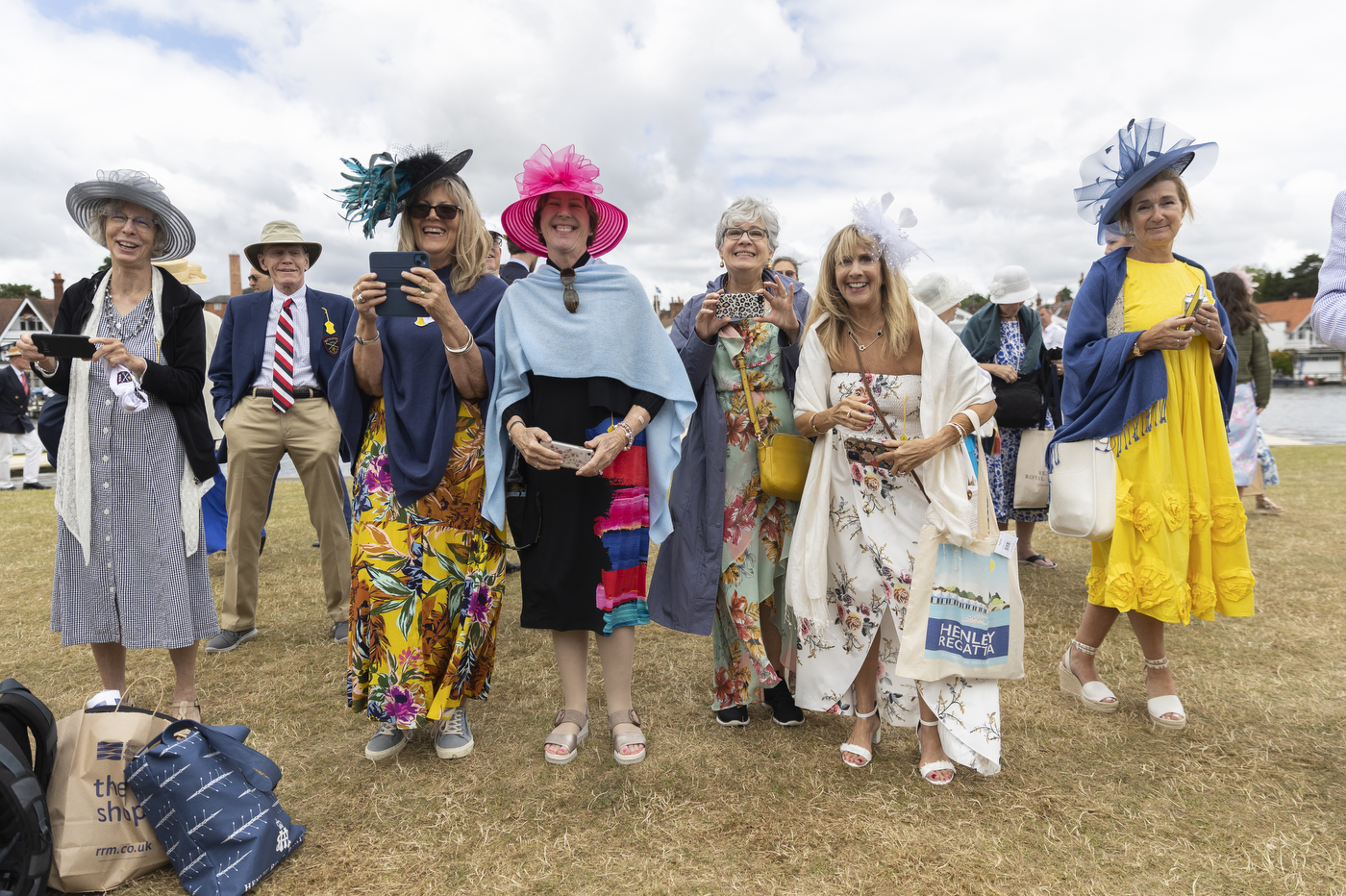
The Wisconsin showdown
Arlett tended to stick with his main lineup throughout the 1973 season:
Bow: Geoffery Marshall
2: William Backman (Captain)
3: John Irving
4: Chris Meehan
5: Peter Karassik
6: John Maslowski
7: Brian O’Connor
Stroke: Calvin Coffey
Cox: Frank Leahy
The Huskies built upon their successful 1972 season (which had also culminated at Henley) by winning all of their dual races in the spring of ‘73. They triumphed in the Eastern Sprints Regatta and returned to England for a two-week season-ending trip, which began with a gold medal at the Nottingham Regatta.
At the Henley Royal Regatta the Huskies faced a semifinal showdown against the powerhouse University of Wisconsin. At stake was the mythical ranking of No. 1 in American rowing.
“I had no doubt we were going to win that race,” recalls Leahy. “At least there was no doubt in my mind. I don’t know what the other eight guys were thinking but I’m pretty sure they felt the same way.”
It was never quite so simple as that, says Meehan. Especially going into the biggest race of their lives.
“There was always the nervousness and the pressure,” Meehan says. “In rowing one of the challenges is you exhaust your body to a point where there are times you’re telling yourself, ‘I can’t do this anymore, I’ve got to stop.’ You hate to get to that point in your mind. And so there’s always that element before a race of, ‘Am I going to be able to handle this?’”
After 400 meters—covering about one-sixth of the famed course—the Huskies began to pull away. As Leahy called out orders he could also hear Arlett, who was turning toward the boat to shout into a hand-held megaphone while bicycling a treacherous path that ran alongside the course—treacherous because he was navigating around unsuspecting spectators standing in his way.
“There’s something called swing where, if the boat is swinging, it feels like it’s effortless,” Meehan says. “It was one of those rows that we just had it going on all eight cylinders. We pretty much had it in control from the start, and if we’d needed to do more, we probably could have.”
“We got out ahead a little bit,” recalls Leahy. “Wisconsin would come back and we would get out ahead again. We just kept holding them off and holding them off. We won by three or four seconds but there was no letting up. Talking to a couple of the guys, they said it was the toughest race they’d ever been in because Wisconsin had a great team. But we were determined.”
As they crossed the finish line the Huskies could be heard shouting, “We’re No. 1!” So reported Sports Illustrated, which published a feature from Henley that week.
The U.S. title was wrapped up but there was still another race to come. The next day the Huskies would take on a Soviet Union team in the Henley final. The Soviets were older, bigger and essentially professional—full-time rowers whose careers were supported by their government in pursuit of international prestige at the Olympics and other major events.
“Maybe we were spent a bit from the day before,” Meehan says. “We never quit on the race. But we were just trying to hang in there with them. We were there but we just couldn’t pull it out.”
We were all committed and that was just part of what I had to do. I don’t regret a second of it.
Frank Leahy, a Northeastern graduate and a former coxswain for the university’s rowing team
Stealing an English bobby’s hat
The Huskies’ progression to the final—and with it the top ranking in U.S. rowing—had rewarded Arlett with a triumphant homecoming. So it is not hard to imagine his anger hours after the loss to the Soviets upon being told that John Maslowski needed to be bailed out of jail for stealing the hat off the head of an English police officer, or bobby, as they are known.
“‘Oh bloody hell’—that’s the kind of thing he probably said,” Meehan says of Arlett.
Maslowski had been talking in vain about stealing a bobby’s hat—a tall rounded dome with a chin strap—during the Huskies’ 1972 appearance at Henley.
“And so the day we lost to the Russians, he was feeling like, ‘OK, I’m either going to do it now or never,” Meehan recalls. “There were a few of us walking along the street when he sees a bobby up ahead. And he says something like, ‘Watch me!’ He takes off running and he grabs the hat off the bobby’s head.
“The guy is shocked and the next thing you know the bobby is blowing his whistle and he’s starting to chase after John. Now people are coming out of the shops, wondering what’s going on. Some guy comes out of one of the shops and tackles John. The bobby’s right behind him and he gets him.
“There were maybe three or four of us who saw all of this. We had to walk to the dinner to tell the coach, ‘You’re going to have to go bail John out of jail.’”
Arlett’s reputation helped soothe tensions. Conciliatory words were spoken. Understandings were reached. On their way out the door, someone whispered to them, “Don’t tell anybody where you got this.” Out walked Maslowski and Arlett from the police station with a bobby’s hat after all.
It became part of the Henley legend, meriting an exhibit at the local rowing museum when the Huskies returned for their 40th reunion. When they visited the museum recently, however, they were disappointed to find that the stolen helmet was no longer on display. Time had moved on.
Weeklong reunion at Henley
They were able to relive the event among themselves during their weeklong reunion at Henley. There were tours and dinners and stories of all kinds. Along the way they noticed that the traditions of Henley had grown more commercial, with more corporate tents lining the river—which served to remind them of their underdog fortune to compete at a more innocent time when rowers could be introduced to the sport and ascend to the top of their world in a span of four or five years.
At one of the team dinners, Meehan spoke emotionally of how Northeastern had established itself as a rowing power.
“I told a story that was an indication of how we had inspired future athletes,” Meehan says. “Because I had been told by Dan Walsh, a former Northeastern oarsman and Olympic medalist, that one of his main reasons for coming to Northeastern was to see if he could replicate what we did in 1973.”
At another of their group meals they learned from two of Arlett’s grand nephews that their ever-mysterious coach had been a prisoner of war.
“It was nothing we had ever heard,” Meehan says. “When he was released at the end of the war in the southeast of England, it took him three days to walk home to Henley. It showed some of the toughness and the grit of who Ernie was, and yet he was still the gentleman.”
The week peaked on their final full day together. On semifinal Saturday at the Regatta they would perform a ceremonial “row past” for the Henley crowds in a sleek carbon-fiber boat. They came out of the tent with the boat on their shoulders along a pathway lined with cheering family and supporters that included the Northeastern women’s team, which one day earlier had concluded its season by winning three races in a strong debut at the Royal Henley Regatta. It was an inspiring moment that brought back the feelings of 1973.
“We’re all 70-year-old men and there’s only so much that you can do,” Meehan says. “But most of us had been rowing on the machines in anticipation of coming to Henley and wanting to be in better shape. There was one guy who lost 25 pounds in the last six months. I would say almost everyone was wanting to be in better shape and not make it an embarrassing thing for themselves and for the crew.”
As they made their way along, they could feel it coming together. They were rowing well.
Why that mattered at this stage of the game was something they understood intuitively.
“That is the essence of what’s in all rowers,” Meehan says. “As old competitive rowers, everybody wants to be able to do it again and feel like they are able to row and row well together.”
They were rewarded with the loudest applause of all the teams that were returning for old times’ sake that day. It was a legacy of Ernie Arlett, no doubt.
As they stepped off the wobbly boat and returned to the dock, embracing in their symbolic farewells, there was a new affirming sense of optimism among the Huskies. This was supposed to have been the grand farewell. But now there is talk of maybe reuniting again in another five years. Because, after all, there is nothing better than the comradery that yields that sense of swing—the timeless feeling that nothing can stop you.
Ian Thomsen is a Northeastern Global News reporter. Email him at i.thomsen@northeastern.edu. Follow him on Twitter @IanatNU.


